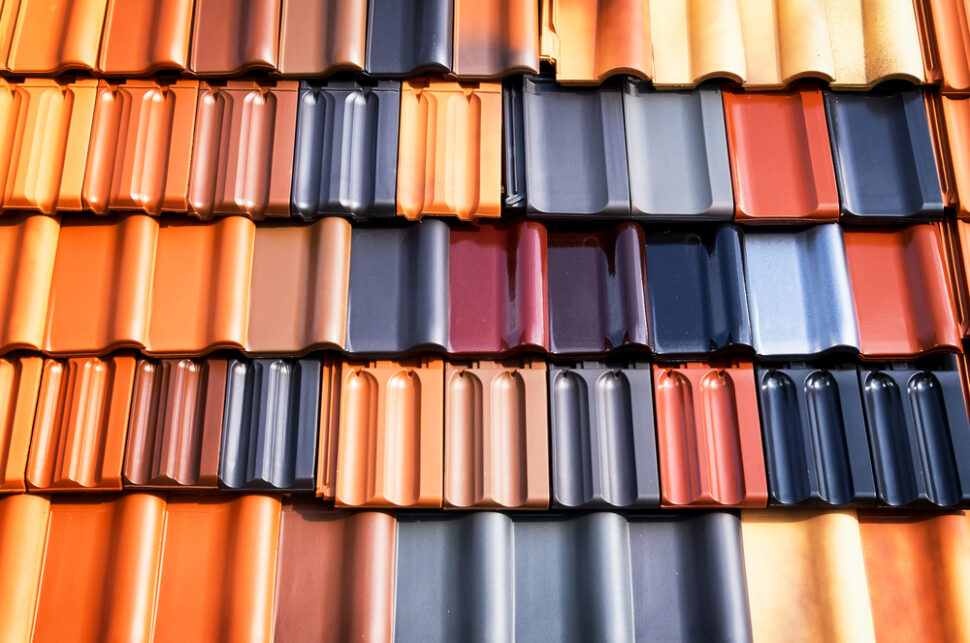The Pros and Cons of Different Roofing Materials
Having a solid roof over your head is one of the most basic needs for any home, and choosing which type of material you should use when replacing or building a new roof is an important decision. With so many options available to homeowners today, deciding which option will offer the best protection at the lowest cost can be difficult.
Let’s dive into some of the most popular roofing materials and examine their pros and cons so you have all the information you need to decide about your home’s roofing needs.

Different types of roofing materials
There are plenty of roofing materials for your home or business. Everything from asphalt shingles to metal roofing has pros and cons that must be weighed before deciding.
Asphalt Shingles
Asphalt shingles are one of the most common types of roofing materials in use today. They come in various colors and styles, making them an attractive choice for many houses. Asphalt shingle roofs are typically made from fiberglass or organic materials coated with asphalt and mineral granules.
Here are the pros and cons to consider when choosing asphalt shingles for your roofing
- Pros: Asphalt shingles are an affordable roofing option and come in various colors. They are also low-maintenance, requiring little to no upkeep once installed. Moreover, they are always available, making them easy to source when needed. They are also well suited for most climates and do not need drastic modifications for different weather conditions. Plus, many asphalt shingle roofs can be recycled when it comes time to replace them.
- Cons: One downside of using asphalt shingle roofs is that the color tends to fade after prolonged exposure to the sun. Additionally, three-tab-style roofs are prone to damage from high winds due to their limited reinforcement capabilities. Finally, these types of roofs have relatively short lifespans, usually lasting between 15 and 30 years, depending on the quality of the shingles.
Metal Roofs
Metal roofing is an increasingly popular trend and has been around for centuries. It is an excellent investment that can offer many benefits, such as durability, energy efficiency, fire resistance, and low maintenance costs. Metal roofs are available in panels and shingles and come in aluminum, copper, stainless steel, or zinc materials.
The following are some of its advantages and disadvantages:
- Pros: Metal roofing is highly durable and can withstand harsh weather conditions. It is also resistant to wind, hail, fire, mold growth, and insect infestation. They are much lighter than traditional asphalt shingle roofs, making installation easier. Lastly, metal roofing requires less maintenance than conventional roofing materials and usually just needs to be inspected periodically for any potential damage or wear and tear.
- Cons: Metal roofs can be more expensive than other types of roofing materials due to their strength and durability. Additionally, installation costs can be higher since metal roofs require special tools and knowledge for proper installation. Plus, they can be pretty noisy when it rains or hails. This may be fine for some homeowners, but those who live in areas that experience frequent storms may find the noise disruptive.
Tile Roofs
Tile roofs are known for their beauty and durability. They have a long life expectancy of up to 100 years, making them an excellent choice for any home or building.
Traditionally, tile roofs were made from slate or fired clay, but now they are often made from tinted, molded concrete. Tile roofs come in many shapes, such as curved, interlocking, fluted, or flat, and can be used to create different styles.
Here are more details about its benefits and drawbacks when you want tiles for your roofing.
- Pros: Tile roofs are resistant to rot and insect damage, and their environmental friendliness because most tiles are made from recycled materials. Tile roofs also have excellent insulation properties, which make them extremely energy efficient. Additionally, they require very little maintenance.
- Cons: One of the major cons of tile roofs is their high cost compared to other roofing options. In addition, tile roofs are often challenging to install and can be quite heavy due to the material used to make them. It is also important to note that tiles can be brittle and may need frequent repair or replacement over time. Also, not all roof slopes are suitable for tile installation.
Wood roofing
Wood roofing typically refers to shingles or shakes made from cedar, redwood, pine, or other softwoods resistant to insect damage. These roofs are popular in dry climates because they can last up to 50 years when properly installed and maintained. However, in wetter climates such as the East Coast, the lifespan of a wood roof may be shorter due to water damage caused by heavy rains and snowfalls.
The following are the pros and cons of wood roofing:
- Pros: Wood roofing provides great curb appeal because of its natural material aesthetic.
- Cons: Since wood can absorb moisture, it’s more susceptible to water damage and can eventually rot or be home to mold or mildew if not properly treated and maintained. You may need to treat your wooden roof with fire retardants and chemical preservatives, which can quickly get expensive.

Glick’s Exteriors can help you choose the right roofing materials
Trying to decide on new roofing materials is easy to get overwhelmed. With so many options and price points, knowing the pros and cons of each material can help make the decision easier.
After all, your roof is one of the most important features of your home–it provides protection from the elements and helps maintain your property value–so it pays to make an informed decision. No matter what you decide, rest assured that we’ll provide you with top-notch roofing service at every step at Glick’s Exteriors. Contact us today to keep up with your roofing needs.
Filed under: Blog










